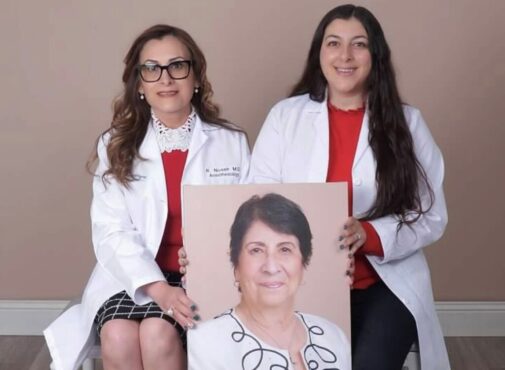Health care heroes: Hearts for Hope

When Garrett Schoenberger developed a fever and was experiencing breathing difficulty, he knew a trip to Aurora Medical Center in Oshkosh was in order.
And it’s where he would spend the next 17 days, the majority of those in the intensive care unit (ICU), intubated and on a ventilator. Garrett had tested positive for the coronavirus.
“He was young and healthy with no comorbidities,” explains Jennifer Oostra, ICU registered nurse who cared for Garrett for much of his stay. “Garrett was our first positive COVID-19 patient at a time where we still knew very little about the virus, and our policies and procedures were changing by the hour.”
His wife Christine was shocked, his children scared. Not being able to visit, due to strict no-visitor restrictions at the hospital, made the time apart from Garrett even more trying.
“The hardest part was not being able to be there with him like in a normal circumstance,” says Christine. “Days were very long waiting for calls on his condition, and no one was sleeping very well.”
Staff in the ICU, however, did what they could to make the Schoenbergers feel more comfortable.
“All over social media, you see people posting photos of their windows at home decorated in ‘Hearts For Hope’,” Oostra says. “After one of my shifts, and with the help of our HUC Hannah, we decorated Garrett’s window with a rainbow of hearts and a sign of Hope.”
Within a day of decorating the window, Garrett was extubated, and just a few days later, he was cleared to leave for home. Watching him walk back to his car and waving goodbye to the Schoenberger family as they drove away, according to Oostra, is her proudest moment yet in the fight against COVID-19.
In addition to decorating windows, Aurora Medical Center staff also provide tablets for patients to video chat with loved ones. Because the ICU is located on the first floor of the hospital, in certain cases, families are sometimes able to briefly gather outside their loved ones’ rooms to see them face-to-face as well.
“We have held countless phone calls up to the ears of our ventilated patients so their families can whisper words of encouragement and ‘I love yous’,” Oostra says.
Not all stories have a happy ending like Garrett’s. After an additional 14 days in home quarantine, he is now back to doing yard work and playing basketball with his son, among other activities. Garrett and his family continue to be thankful for the care they received, and Garrett’s mother has even donated homemade masks for staff members to wear when they are not at the hospital.
“It takes something like this to realize how your life could change in a second,” says Garrett. “Too many times, we take stuff for granted. [The health care workers] are sacrificing their lives every day to come wait on a patient like me. I just want to thank them from the bottom of my heart for saving my life.”
Related Posts
Comments
About the Author
Cali Nygren, health enews contributor, is a marketing intern for Aurora BayCare with a BA in business administration from the University of Wisconsin – Green Bay. In her spare time, you may find Cali cracking jokes, watching Marvel movies, and spending time with her friends and family.

















